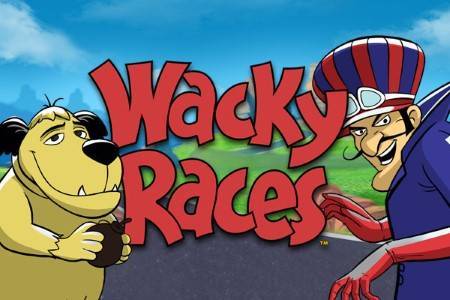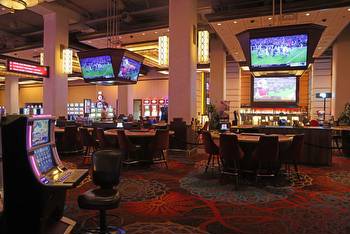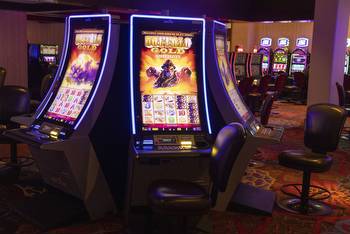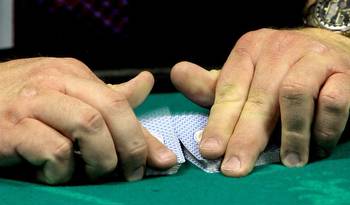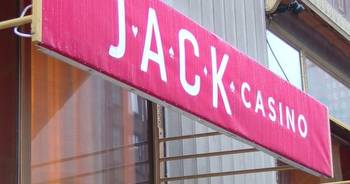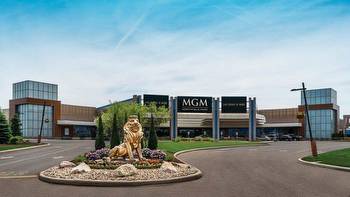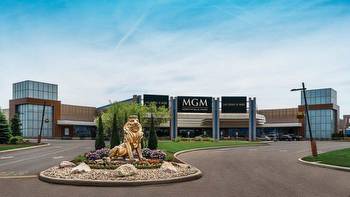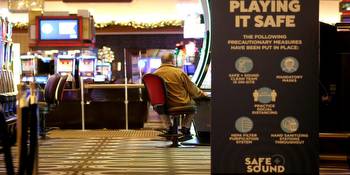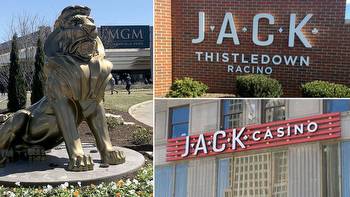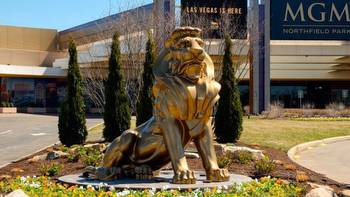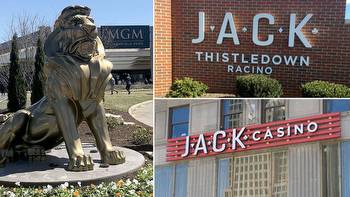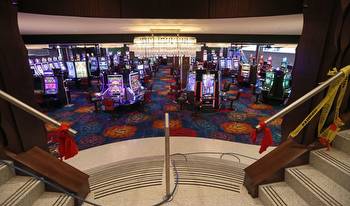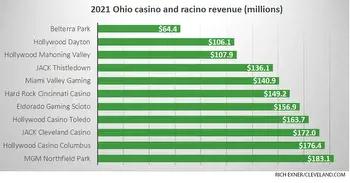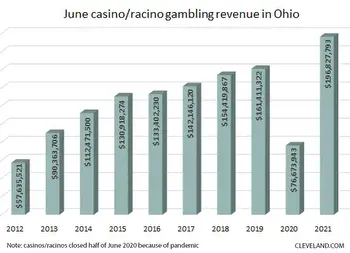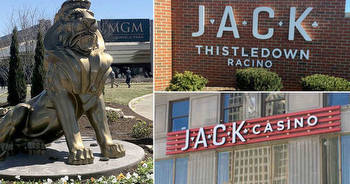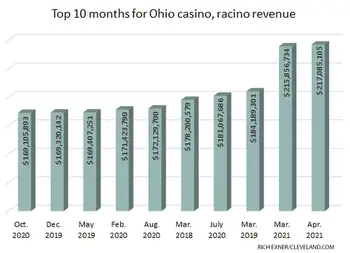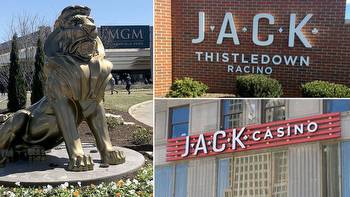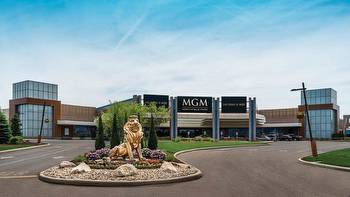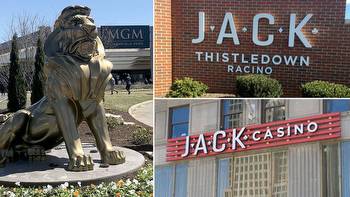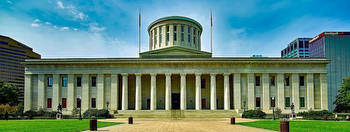‘Part of the fabric of Cleveland’ JACK Casino, Ohio’s gambling industry now 10 years old

CLEVELAND, Ohio — The downtown JACK Cleveland Casino ushered in Ohio’s modern gambling era in 2012, and since its inception, the urban casino has been a learning experience for the people running it.
“Cleveland was new,” said Jack Cleveland’s General Manager Scott Lokke. “No one really understood the urban gaming market. … Learning came very fast and very quick and forced us to run audibles very quickly.”
Originally called the Horseshoe, Cleveland’s casino was the first to open in Ohio after a constitutional amendment in 2009 made them legal.Its doors opened on May 12, 2012, and was followed by three more casinos, with one in Columbus, Cincinnati and Toledo.
The casinos together have funneled billions of dollars of tax revenue to the state, even though they didn’t live up to some early projections.
When ClevelandCavaliers owner Dan Gilbert, the original owner of Cleveland’s and Cincinnati’s casinos, introduced the Horseshoe, he promised the casino would be a source of “two-way” traffic, attracting and sharing visitors with the rest of downtown.
Lokke said a lot has changed in the casino and downtown, but the mantra stays the same.
“We’re such a part of the fabric of Cleveland,” Lokke said.
Ohio welcomed legal gambling at the ballot box in 2009 after four failed attempts. Gilbert was one of the main figures pushing for legalization, and at the time Caesar’s Entertainment had an ownership stake in Cleveland’s casino.
Lokke worked for Caesar’s at the time and worked on the development side for both the JACK Cleveland Casino and what is now the Hard Rock Casino in Cincinnati.
Cleveland’s Casino was much different, he said. It was Caesar’s first urban casino outside of Vegas. Most casinos were built as destinations, with resorts, hotels and other amenities built to encourage days or weeklong stays.
The JACK Cleveland didn’t even have its own hotel and was attracting a customer that may pop in for a few hours. Most visitors live 15 to 20 miles from the casino, Lokke said.
Lokke said the Horseshoe debuted with 2,500 slot machines and just 60 table games, since slots were the revenue drivers in most suburban casinos.
Patrons quickly showed they wanted something different. They skewed younger, and wanted more bars, music and entertainment, fewer slots and more table games.
Lokke said 1,500 slot machines were cut from the casino’s lineup and the number of table games was raisedto 100. He said the model for the JACK has been a more fun, entertaining atmosphere that fits in with downtown nightlife, and changes since the beginning have skewed towards that direction.
The trend towards more interactive gaming has spread to more urban casinos and even Las Vegas in the last decade, Lokke said. Slot machines used to be three rolling columns. Now video gaming machines look more like video games.
More recently JACK Cleveland has added an outdoor gaming space, a second parking garage (casino-goers park for free) and a new poker room. Now it’s in the middle of adding a 5,000 square-foot sportsbook in anticipation of legal sports betting in Ohio.
When the casino moved into the Higbee Building, a “phase 2″ was always envisioned, but never panned out. Soon after casinos were legalized, horse-racing tracks in Ohio won the right to have slot machines. This addedseven competitors across the state and two in Northeast Ohio, though unlike the casinos, the racinos cannot offer table games, poker rooms or even games of skill at the slots.
In 2016 Rock Gambling separated from Caesar’s and become JACK Entertainment, which came with a rebranding of the downtown casino. Matt Cullen, the casino’s first CEO, later led a team of investors that bought JACK Entertainment from Gilbert, turning it into an Ohio-based gaming company with two locations.
In 10 years of existence, JACK Cleveland Casino has brought in $2.19 billion in gambling revenue, which is money it makes on people placing bets.
It’s paid one-third, or about $731 million of that revenue, in taxes. It’s sent $373 million to Ohio’s 88 counties, $248 million to school districts and $37 million to its host city, not counting Cleveland’s split of the taxes sent to Cuyahoga County.
Those pushing for legalization were careful not to predict how much revenue would be made, but Ohio’s gambling industry hasn’t lived up to estimates from the state.
In October 2009, before legal gambling hit the ballot box, Ohio’s Department of Budget and Management and Department of Taxation analyzed the impact of opening casinos on the state’s budget.
Even considering the possibility of racinos also opening for business, that analysis predicted $1.42 billion in yearly gambling revenues from Ohio’s four casinos. The casinos combined brought in $984 million in 2021 during a record year.
JACK Cleveland had a record year in 2021 with $257 million in gambling revenue, but the 2009 analysis predicted $473 million of annual revenue. The same analysis over-predicted how much revenue the Columbus and Cincinnati casinos would pull in by wide margins as well. Only Toledo’s prediction was close.
Since 2013 the casinos’ gambling revenue has grown from $821 to $984 million a year. The seven racinos now bring in upwards of $1.2 billion every year.
Ohio was late to gambling compared to its neighbors, with Indiana, Pennsylvania and Michigan all having casinos first. The analysis didn’t expect gamblers to flock from outside Ohio. It did predict, though, that Ohio would “recapture” its in-state gamblers.
Detroit was an early adopter and became an established market before any Ohio casinos opened. The city’s three casinos brought in $1.3 billion of gambling revenue in 2021, dwarfing Ohio’s four casinos.
Cleveland’s casino has been outperforming the one in Pittsburgh. From January to April, Pittsburgh’s Rivers Casino has brought in $74 million in slots and table games revenue, compared to $86 million at JACK Cleveland.
It’s not like gambling revenue in Ohio isn’t growing. Ohio’s casinos and racinos have broken the record nine out of the last 10 years. The only year they didn’t was in 2020, when COVID-19 related shutdowns and curfews disrupted the industry.
Over 10 years, Ohio’s casinos have brought in $8.15 billion in revenue, paying about $2.72 billion in taxes on gambling earnings alone.
Lokke would later become JACK Casino’s general manager in 2015. Since then, downtown Cleveland has seen major change, as well as a pandemic.
Since the casino’s inception, both Rocket Mortgage Fieldhouse and Public Square have been renovated. The residential population, even after being deterred by COVID-19, reachedthe Downtown Cleveland Alliance’s goal of 20,000 people living downtown by 2020.
From the beginning Lokke said the casino was developed with minimal food and beverage to help push people out of the venue into downtown. Gamblers are still rewarded with vouchers for restaurants and tickets to shows or games through JACK’s reward platform.
Lokke said the casino has welcomed 35 million visitors since May 2012, and as of late averages 10,000 people through a 24-hour day. While casinos set revenue records since the COVID-19 pandemic began, attendance is still down compared to two years ago.
As workers return downtown and Sherwin-Williams builds its new headquarters on Public Square, Lokke said he’s expecting even more change.
“A rising tide raises all boats,” Lokke said.
The JACK casino isn’t done changing either. Lokke said there was many capital improvements made in the first half of the casino’s life. In the past 18 to 24 months, he said JACK has invested tens of millions of dollars into the property.
Lokke said he expects several more years of growth for the casino.
“Ten years really isn’t that long foran entirely new industry that really didn’t exist before in Ohio,” Lokke said.







